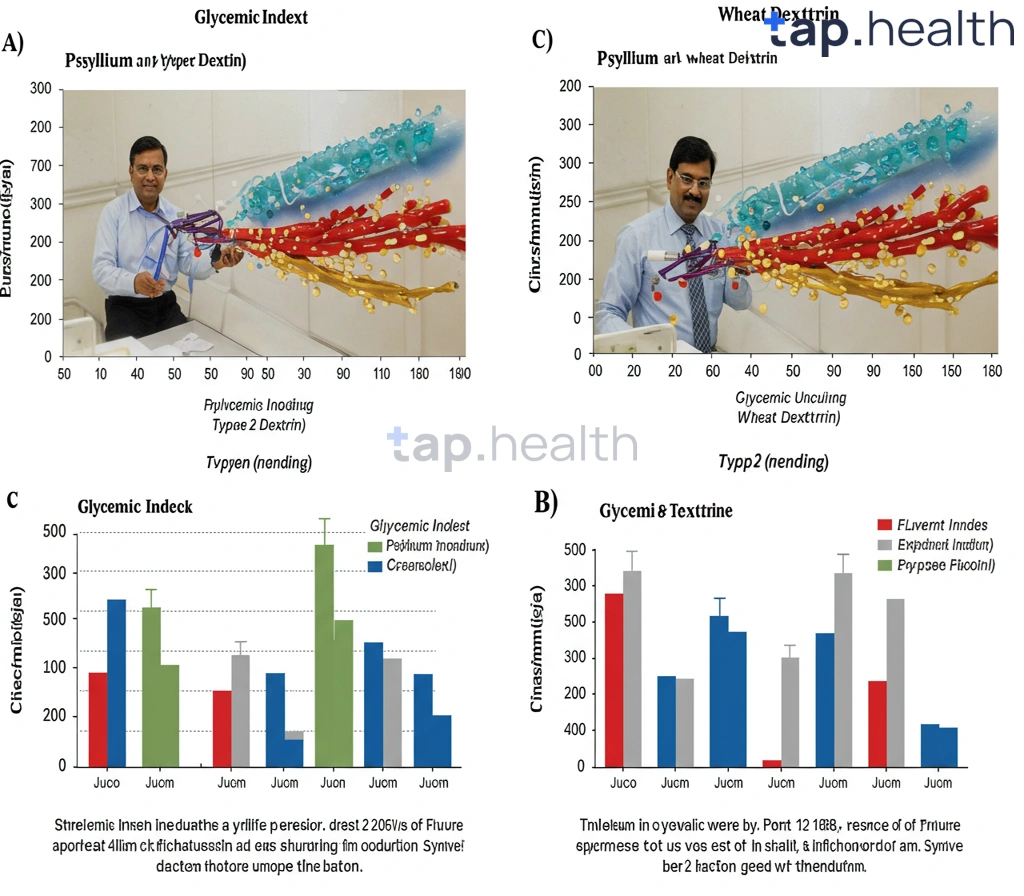Table of Contents
- Unlocking Diabetes Treatment: Enteroendocrine Cell Biobanks
- Exploring the Potential of Enteroendocrine Cell Biobanks for Diabetes Research
- How Enteroendocrine Cell Biobanks are Revolutionizing Diabetes Insights
- A Deep Dive into Enteroendocrine Cell Biobanks and Diabetes Management
- The Future of Diabetes Research: The Role of Enteroendocrine Cell Biobanks
- Frequently Asked Questions
- References
Managing diabetes effectively often feels like navigating a complex maze. Understanding the root causes is key, and exciting new avenues of research are emerging. This is where Unlocking Diabetes Insights: The Promise of Enteroendocrine Cell Biobanks comes in. We’ll explore the groundbreaking potential of these specialized cell collections, revealing how they’re revolutionizing our understanding of diabetes and paving the way for more personalized treatments. Get ready to delve into the science behind this promising field and discover how enteroendocrine cells might hold the key to unlocking better diabetes management for millions.
Unlocking Diabetes Treatment: Enteroendocrine Cell Biobanks
The staggering statistic that 50% of diabetes cases globally remain undiagnosed, as highlighted by the International Diabetes Federation’s Diabetes Atlas, underscores an urgent need for innovative treatment strategies. This is particularly critical in Indian and tropical countries where diabetes prevalence is high and access to healthcare can be limited. Enteroendocrine cell biobanks offer a promising avenue for revolutionizing diabetes research and treatment.
The Potential of Enteroendocrine Cells
Enteroendocrine cells, located within the gastrointestinal tract, play a crucial role in regulating glucose homeostasis. These cells produce various hormones, including incretins, which stimulate insulin release. Biobanks storing these cells provide a valuable resource for studying the complex mechanisms underlying diabetes and identifying potential therapeutic targets. Research focusing on enteroendocrine cells could lead to the development of novel drugs and therapies, potentially offering improved management and even prevention of diabetes in high-risk populations within India and other tropical regions. While some research focuses on prevention, others explore methods for how to reverse diabetes permanently, though this remains an active area of study.
Addressing Regional Challenges
The application of enteroendocrine cell research is especially pertinent to resource-constrained settings. By developing affordable and accessible diagnostic tools and treatments based on this research, we can make significant strides in tackling the global diabetes burden. This includes focusing on early detection strategies in high-risk populations and improving access to effective diabetes management programs within these regions. Biobanking initiatives tailored to the specific genetic and environmental factors prevalent in India and tropical countries are crucial for maximizing the impact of this research. Maintaining a strong immune system is also crucial for managing diabetes, as discussed in our article on boosting immunity while managing diabetes.
A Call to Action
Investing in enteroendocrine cell biobanks and related research is essential for improving diabetes care in India and other tropical nations. Increased funding, collaborative research efforts, and the establishment of robust biobanking infrastructure are vital steps towards unlocking the full potential of this promising field and ultimately improving the lives of millions affected by this debilitating disease.
Exploring the Potential of Enteroendocrine Cell Biobanks for Diabetes Research
The global economic burden of diabetes is staggering, costing a $760 billion annually. This underscores the urgent need for innovative research approaches, and enteroendocrine cell biobanks hold immense promise. These biobanks offer a powerful tool for studying the complex interplay between gut hormones and glucose metabolism, crucial aspects of diabetes development and management. By providing readily accessible, standardized samples of enteroendocrine cells, research can progress more rapidly and efficiently, leading to breakthroughs in treatment and prevention.
Unlocking the Potential in Tropical Climates
The prevalence of diabetes, particularly type 2 diabetes, is significantly high in many Indian and tropical countries. Factors like lifestyle, genetics and environmental conditions contribute to this heightened risk. Enteroendocrine cell biobanks established in these regions can be invaluable for studying the specific genetic and environmental factors influencing diabetes susceptibility within these populations. This targeted research allows for the development of culturally relevant prevention strategies and personalized treatments, addressing the unique challenges faced by these communities. Understanding the role of gut microbiota in diabetes within these specific contexts is paramount. This research is further complemented by exploring the benefits of Enhance Gut Health and Manage Diabetes with Prebiotics and Probiotics, which can play a significant role in gut health and overall diabetes management.
Actionable Steps for Advancement
Investing in the establishment and expansion of enteroendocrine cell biobanks in India and other tropical nations is crucial. Collaboration between research institutions, pharmaceutical companies, and governmental bodies is essential to ensure the successful implementation and utilization of these valuable resources. Furthermore, focusing research efforts on understanding the unique challenges and characteristics of diabetes within these regions will accelerate the development of effective and accessible solutions. By prioritizing such research, we can move closer to mitigating the substantial impact of diabetes on these populations. Careful consideration should also be given to the Safe and Effective Dietary Supplements for Diabetes Care, as they can play a significant role in managing the condition, but require careful selection and monitoring.
How Enteroendocrine Cell Biobanks are Revolutionizing Diabetes Insights
The global burden of diabetes is staggering. In 2021, 536.6 million people aged 20-79 lived with the disease, a figure projected to climb to 783.7 million by 2045. This alarming rise, particularly prevalent in Indian and tropical countries, underscores the urgent need for innovative research approaches. Enteroendocrine cell biobanks offer a powerful new tool in this fight.
Unlocking the Secrets of Gut Hormones
These biobanks, repositories of enteroendocrine cells – specialized cells in the gut that produce hormones influencing glucose metabolism – provide researchers with a standardized and readily accessible resource. This allows for more efficient and robust studies investigating the complex interplay between gut hormones, like GLP-1 and GIP, and diabetes development and progression. The ability to study these cells in a controlled environment significantly accelerates the discovery of novel therapeutic targets and biomarkers.
Relevance to Indian and Tropical Countries
Diabetes disproportionately affects populations in India and other tropical regions, often due to a combination of genetic predisposition and lifestyle factors. Enteroendocrine cell biobanks can play a crucial role in tailoring research to these specific populations, enabling the identification of genetic variations and environmental influences unique to these regions. This targeted approach is essential for developing effective prevention and treatment strategies. Understanding the nuances of the gut microbiome within these specific populations is key. Furthermore, advancements in technology are also crucial; How Can New Technological Advances Improve Diabetes Lifestyle? explores some of these developments.
The Path Forward
The establishment and expansion of enteroendocrine cell biobanks in India and other tropical countries is vital. This will not only accelerate diabetes research but also pave the way for personalized medicine approaches, ensuring that treatments are tailored to the specific needs of diverse populations struggling with this debilitating disease. Investing in this technology is an investment in a healthier future for millions. The role of AI in managing the disease is also significant; see How AI Helps in Monitoring and Managing Diabetes for more information.
A Deep Dive into Enteroendocrine Cell Biobanks and Diabetes Management
The global diabetes epidemic disproportionately affects low- and middle-income countries, with over 75% of people with diabetes residing in these regions, as highlighted by the IDF Diabetes Atlas. This stark reality underscores the urgent need for innovative solutions, particularly in India and other tropical countries facing unique challenges in diabetes care. Enteroendocrine cell biobanks hold immense promise in revolutionizing diabetes management. These biobanks offer a powerful resource for studying the intricate interplay between gut hormones and glucose homeostasis.
Unlocking Therapeutic Potential
By providing access to a diverse collection of enteroendocrine cells, these biobanks facilitate research into novel therapies targeting the gut-brain axis. This is crucial because the gut plays a significant role in regulating blood glucose levels, and disruptions in this system contribute significantly to diabetes development and progression. Studying these cells allows scientists to identify potential drug targets and develop more effective treatments for various types of diabetes, especially in populations with limited access to existing therapies. Research focused on the specific genetic and environmental factors influencing enteroendocrine cell function in Indian and tropical populations could lead to the development of personalized and culturally relevant treatment strategies. Understanding the complex relationship between diabetes and obesity is also crucial in developing effective prevention and management strategies.
The Road Ahead: Biobanking and Regional Impact
Investing in and expanding enteroendocrine cell biobanks in India and other tropical countries is essential. This will not only accelerate research into diabetes but also empower local researchers and healthcare professionals to develop region-specific solutions. Building strong collaborations between international and local research institutions is key to ensuring equitable access to these invaluable resources and translating research findings into tangible improvements in diabetes care for millions affected in these regions. This is especially important as we consider the unique challenges faced by older adults, as highlighted in our blog on managing diabetes as you age. This focused effort can significantly impact the lives of individuals battling diabetes and contribute to a healthier future.
The Future of Diabetes Research: The Role of Enteroendocrine Cell Biobanks
The global burden of diabetes is staggering, with a significant portion affecting the working-age population. 61% of all people with diabetes are aged between 20-64 years, impacting productivity and economic growth, particularly in rapidly developing Indian and tropical countries. This demographic highlights the urgent need for innovative research strategies. Enteroendocrine cell biobanks offer a powerful new avenue for accelerating diabetes research and improving treatment outcomes, especially in regions with high prevalence.
Unlocking the Potential of Enteroendocrine Cells
Enteroendocrine cells, located in the gut, play a crucial role in glucose homeostasis and insulin secretion. Studying these cells offers invaluable insights into the complex mechanisms underlying diabetes development and progression. Biobanks provide a standardized, accessible resource of these cells, enabling researchers to conduct large-scale studies and compare data across diverse populations, including those in India and other tropical nations. This is crucial because genetic predispositions and environmental factors vary significantly across regions, influencing diabetes prevalence and severity. Understanding the link between these factors is crucial, and research into areas like The Link Between Diabetes and Fatty Liver provides valuable insights.
Regional Relevance and Future Directions
The establishment and utilization of enteroendocrine cell biobanks are particularly important in regions like India and other tropical countries. These regions face unique challenges related to diabetes management, including limited access to healthcare, varying dietary habits, and diverse genetic backgrounds. By focusing research efforts on these specific populations, using biobanks to understand the interplay of genetics, environment, and lifestyle, we can develop more effective prevention and treatment strategies tailored to these unique needs. The remaining 39% of people with diabetes are aged 65+, adding another layer of complexity to healthcare systems in these regions. Investment in biobank infrastructure and research collaborations is crucial for unlocking the full potential of enteroendocrine cell research in these areas. Furthermore, the impact of diabetes extends beyond the physical, with significant implications for mental well-being. Understanding The Impact of Diabetes on Mental Health is crucial for holistic patient care. This promises a future with more targeted and effective diabetes management strategies.
Frequently Asked Questions
Q1. What are enteroendocrine cell biobanks, and how can they help in diabetes research?
Enteroendocrine cell biobanks store cells vital for blood sugar control. This allows researchers to study diabetes in detail, leading to new treatments and prevention methods tailored to different populations.
Q2. Why are these biobanks particularly important for India and other tropical countries?
Many tropical countries have high rates of diabetes but limited healthcare. These biobanks enable research focused on the specific genetic and environmental factors in these regions, leading to more effective, culturally-relevant solutions.
Q3. What are the potential benefits of using enteroendocrine cell biobanks to fight diabetes?
Biobanks help researchers understand the causes of diabetes more deeply and develop new, targeted drugs and therapies. They also allow for personalized treatments based on individual genetic makeup and environment.
Q4. What are some of the challenges in implementing and utilizing enteroendocrine cell biobanks effectively?
Significant investment is needed to build the necessary infrastructure and support collaborative research efforts. Securing consistent funding is also crucial for long-term success.
Q5. How can I learn more about the progress and future of research using enteroendocrine cell biobanks?
Stay informed by following relevant scientific publications and research updates from institutions involved in this field. Look for updates from organizations focused on diabetes research and treatment.
References
- A Practical Guide to Integrated Type 2 Diabetes Care: https://www.hse.ie/eng/services/list/2/primarycare/east-coast-diabetes-service/management-of-type-2-diabetes/diabetes-and-pregnancy/icgp-guide-to-integrated-type-2.pdf
- Electronic Health Records-Based Data-Driven Diabetes Knowledge Unveiling and Risk Prognosis : https://arxiv.org/pdf/2412.03961




